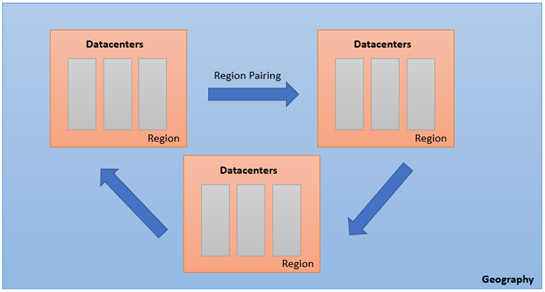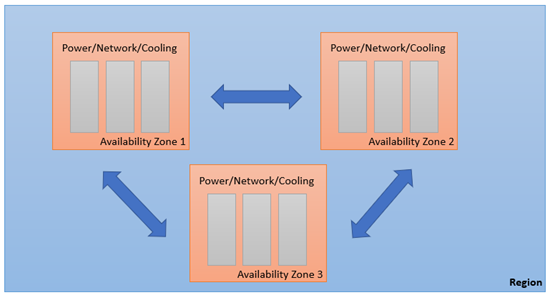 Azure
Azure
Region and Availability Zone in Azure
In this article, we will learn about Region and Availability Zone in Azure
Total Views: 3084
Azure datacenters are present in many geographical regions across the globe. There are several reasons due to which azure data centers are available in multiple regions out of which few are mentioned below:
1) Availability of datacenter in user’s region gives better performance to the user.
2) Fulfil the customer compliance, legal, or tax requirement.
3) Disaster Recovery
Azure geography includes countries like the United States, Australia, Canada, Japan, and so on. You can see the complete list of the geography where the Azure Datacenters are present on Microsoft Azure's official website.

Data residency and compliance are the important key factors for Azure Geography. For example, China. In China, Azure is physically isolated and operated by the Shanghai Blue Cloud Technology Co. Ltd. (21Vianet). Azure China enables the Chinese companies to store their data as well applications in China and meet the strict Chinese guidelines.
Azure Regions: Each geography is further divided into regions. Each geography contains multiple regions and each region contains multiple datacenters. Each region is paired with another region of the same geography to provide redundancy and availability for the services hosted in the region and replication of the resources to reduce the effects caused by the Natural Disaster, Outage, etc. For example, In US geography, there are regions like Central US, East Us.

As you can see in the above image, there are multiple regions in geography that are interconnected.
Availability Zone: Availability Zones are physically separated zones within an Azure region that are tolerant to the local failures. Azure ensures the availability of its services with Availability Zone as each availability zone has its separate power, network, and cooling connectivity. Local failure can occur from software as well as hardware failure due to events like earthquakes, floods, and fires. Azure mostly has a minimum of three availability zone in each region.
Azure services categories that support availability zone are:
1) Zonal Services: A resource can be deployed to a specific, self-selected availability zone to achieve better performance. Resiliency is self-architected by replicating applications and data to one or more zones within the region. For example, Virtual Machines can be pinned to a specific zone.
2) Zone Redundant Services: Resources are replicated across the zone automatically. Storage, SQL Database are examples of Zone Redundant Services.
3) Always Available Services: Also known as non-regional services as services always available across all geographies and resilient to zone as well region-wide outages.

